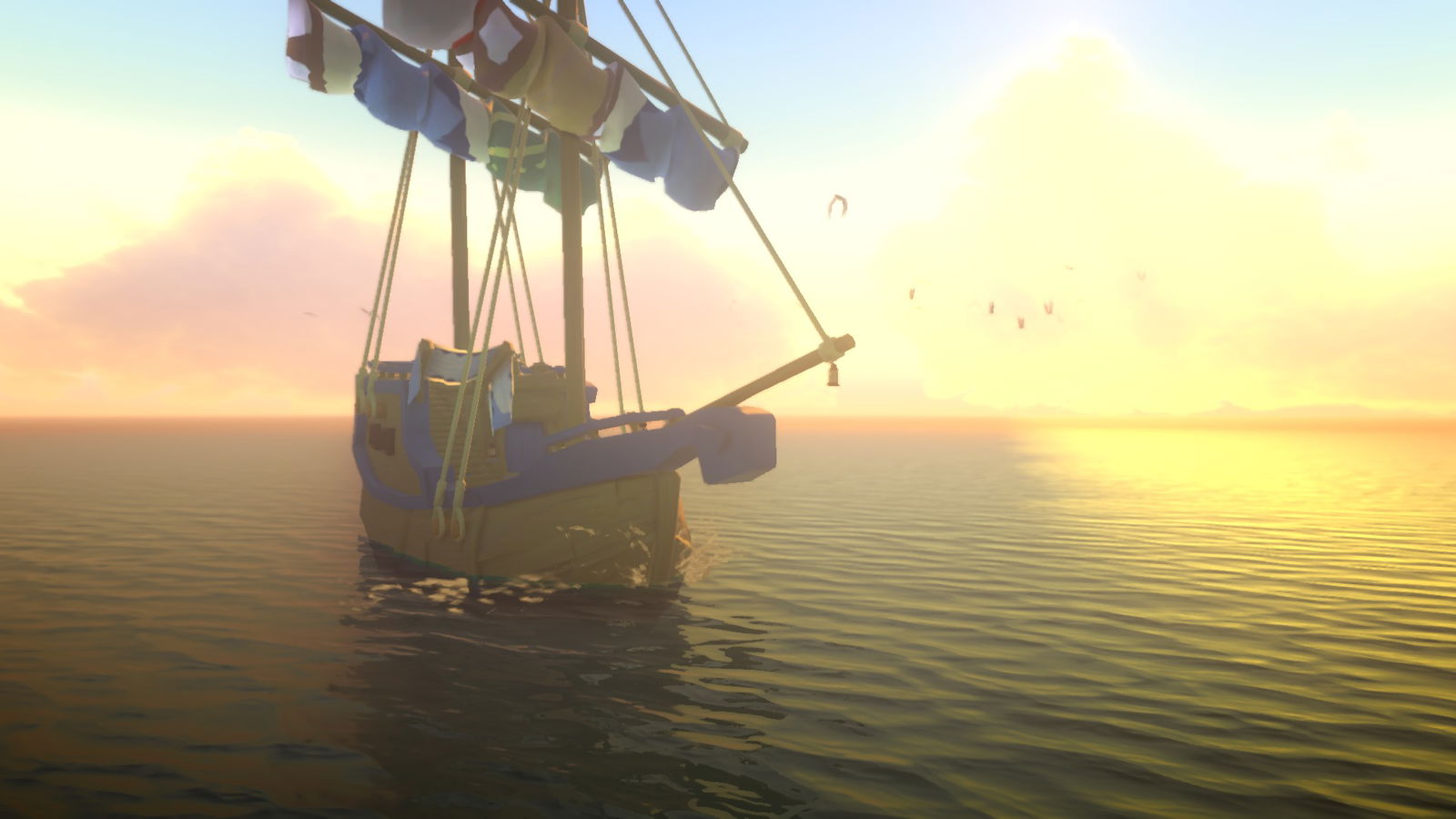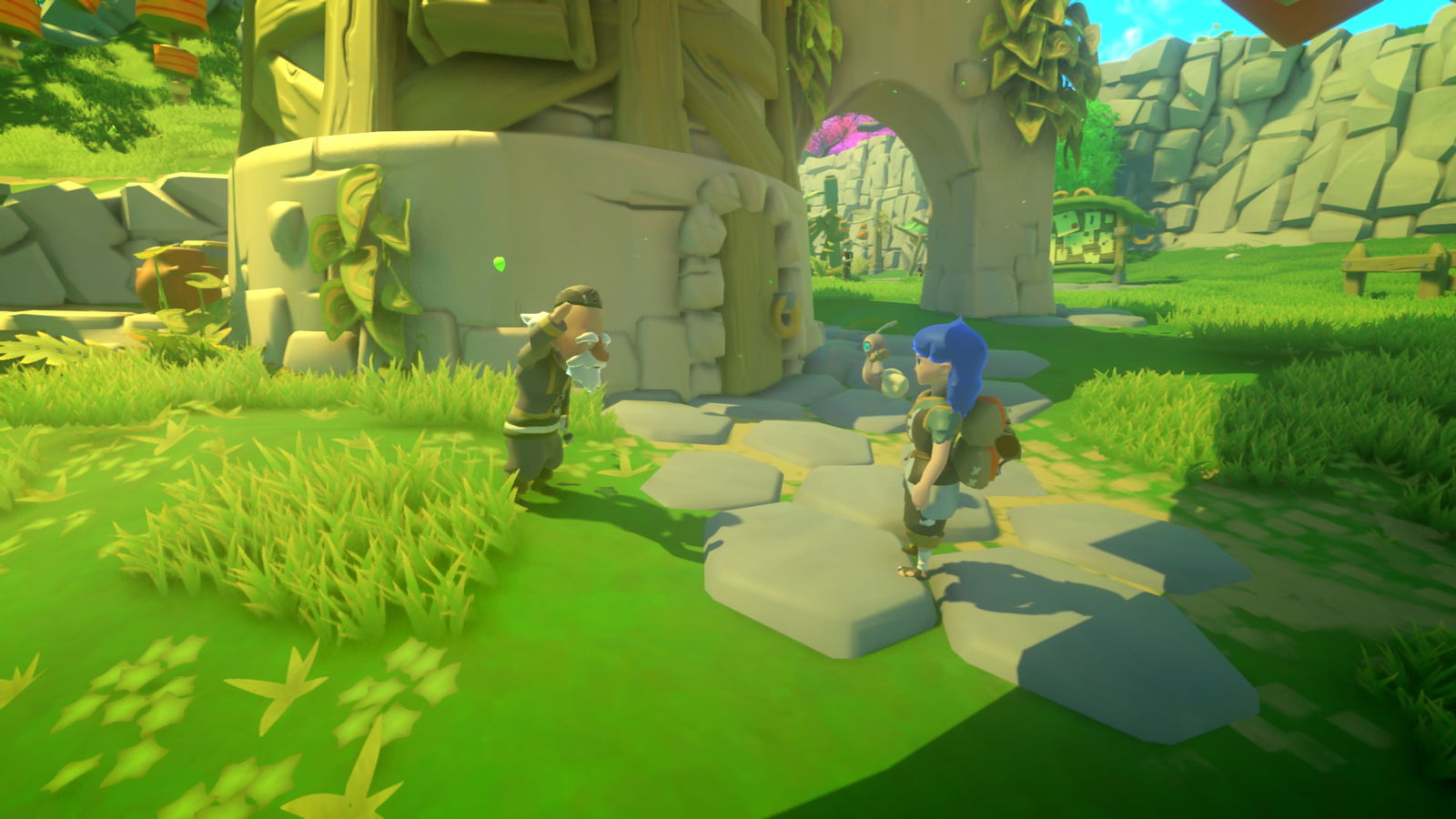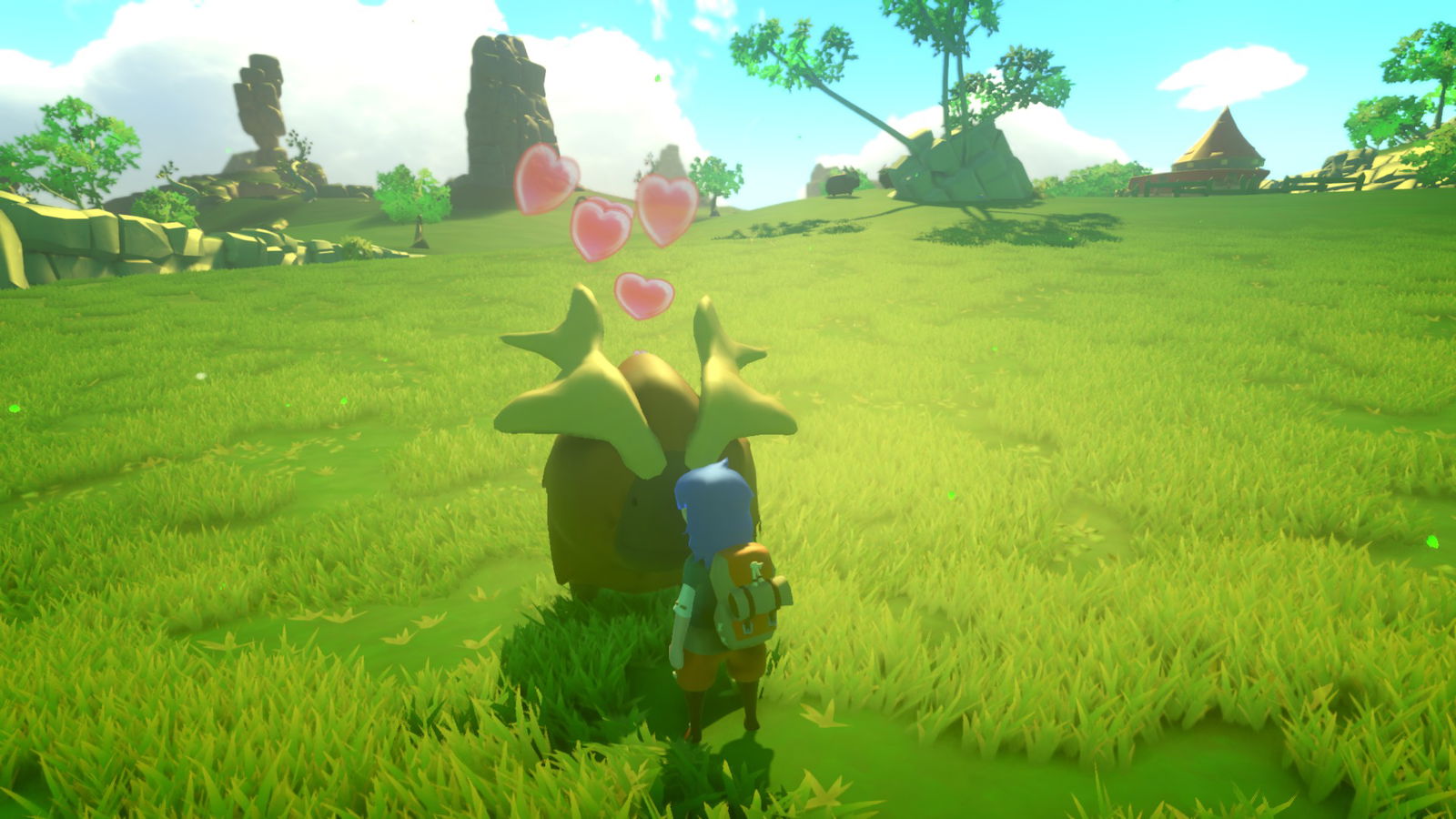Yonder: The Cloud Catcher Chronicles is more of an exploration-based adventure without strict goals than a typical farming simulator. There is a story behind Yonder, but it serves more as a backdrop to the game’s farming, crafting, collecting, and exploration.
Most of my time with Yonder was spent doing nothing, but I was oddly okay with that. I spent much more time tending to farms, gathering colored shampoos, beards, and adorable-but-useless-cats than I did completing the main quests. It’s an easy game, but completing one’s own personal list of objectives was satisfying enough to keep me entertained.
Game Name: Yonder: The Cloud Catcher Chronicles
Platform(s): PlayStation 4, PC
Publisher(s): Prideful Sloth
Developer(s): Prideful Sloth
Release Date: July 18, 2017
Price: $24.99
Yonder begins with your character shipwrecked on the island of Gemea. Gemea is plagued by a dark fog called “Murk” that players will clear by using the sprites they collect. Abandoned buildings, run-down shrines. and monuments are scattered throughout the regions of Gemea. Despite this, the world still manages to be quite pleasant. The snowy regions, mountains, grasslands, beaches, and forests all feel like familiar components of an open-world adventure game, but Yonder brings enough of its own character to feel original.
The map of Gemea is large, but not overwhelming. After roughly 10 hours, I still hadn’t explored all the regions on the map and certainly had not completed each region’s quests. However, walking from one region to another on the other side of the map never took too long. This is important because players will need to move back and forth across to complete quests, and collect the sprites necessary to clear a region’s Murk. Yonder does have a fast travel system, but it isn’t made clear right away. Each of the eight regions has a sage stone to be unlocked, which opens the region’s fast travel. The joy of Yonder comes from making these kinds of discoveries.
Clearing Murk from Gemea is one of the game’s key objectives. There is no time limit on accomplishing this, but there are parts of the map that are inaccessible until Murk is cleared. Clearing the thick purple fog requires a certain number of sprites. Sprites can be found by interacting with objects surrounded by a blue glow. Sometimes the sprites join you on your journey immediately, and other times they require you to complete a quest first. It can feel tedious when you have to turn back to acquire more sprites because the pathway to your objective is blocked by Murk. It’s really the only time the game calls on you to do something. Otherwise, it’s completely up to the player how much of a region they want to complete.
There is no combat or death in Yonder (but the screen goes black if your character jumps into deep water, if that counts). Along with the main quests, villagers in each region assign their own tasks to the player in order to help restore the island back to normal. The majority of these tasks are fetch quests – villagers pretty much always ask for a list of items to be retrieved or built. This isn’t where the game shines, but it is satisfying to clear a region’s quests and gather all its collectibles.
You get your first farm early in the game, at which point you can begin collecting wild animals. There aren’t any sheep or cows in Yonder – instead you have equally adorable groffles and fenicorns. Improve your farm’s rating by playing with the animals, hiring a farmhand, and cleaning the farm (because the animals poop, A LOT). Animal products can then be used in trade with merchants in place of currency. The farming mechanics definitely have a Harvest Moon quality to it, but the farming isn’t as central an element.
While not the most graphically impressive game around, Yonder‘s world is charming and even quite beautiful at times. The changing day/night, rain/sunshine cycles create environments that feel dynamic. What the game lacks in narrative it more than makes up for with its clever, engaging world. The different regions of Gemea are unique, and even after several hours I still enjoyed exploring the map. However, there were some semi-frequent drops in framerate on the PlayStation 4 version – not bad enough to detract from the experience, but frequent enough to be noticeable.
The main quests do not take long to complete, but Yonder has a lot else to offer beyond that. The game is what players decide to make of it, and its greatest strength is it never tethers you to a single purpose. Both the farming and exploring components feel familiar, but the game brings its own charm and silliness to make Yonder feel special.
Review Disclosure Statement: Yonder: The Cloud Catcher Chronicles was provided to The Outerhaven by the publisher for review purposes. For more information on how we review video games and other media/technology, please go review our Review Guideline/Scoring Policy for more info.
Affiliate Link Disclosure: One or more of the links above contain affiliate links, which means at no additional cost to you, we may receive a commission should you click through and purchase the item.
Want more game reviews from The Outerhaven? Consider the following:
- Micro Machines World Series (PS4) Review
- The Legend of Heroes: Trials of Cold Steel (PC) Review
- Children of Zodiarcs (PC) Review
Summary
The beauty of Yonder: The Cloud Catcher Chronicles is the player’s ability to choose what they want to focus on. Exploring lands full of groffles and magic sprites serves as a refreshing break from other games. Its story and quests are not the most engaging, but the world of Yonder has enough charm that its shortcomings are easy to forgive.





